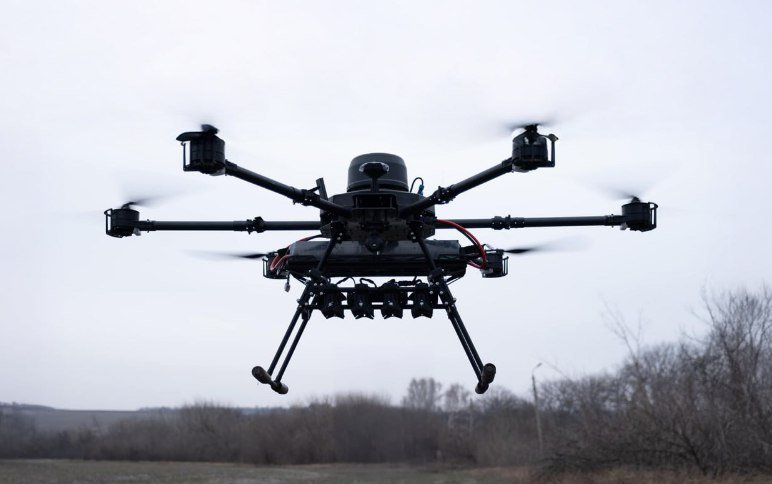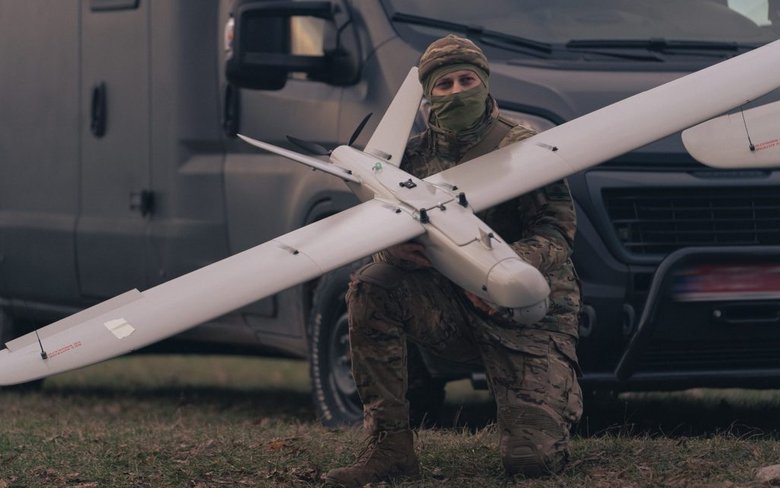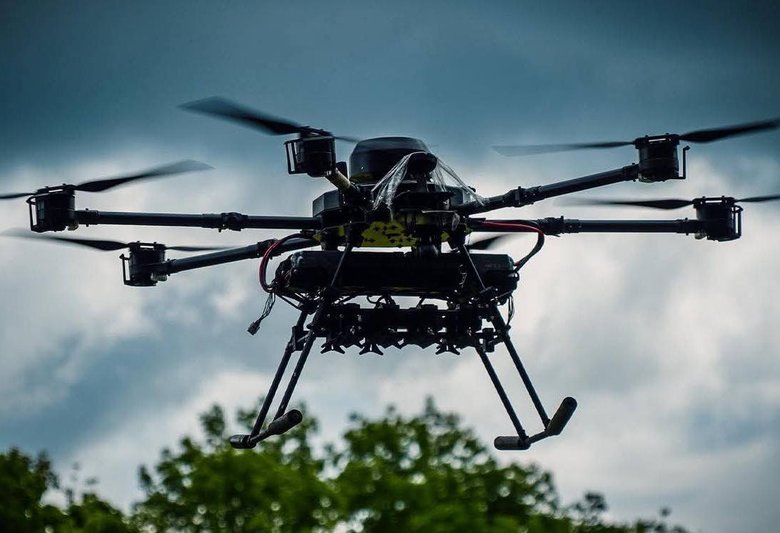Divine retribution: Top 10 UAV types in Ukraine’s drone industry
Drone Industry
Today, Ukraine has more than 500 active UAV manufacturers and over 1,000 UAV models. During the full-scale war, production has increased 800-fold: from 5,000 units in 2022 to 4 million by the end of 2024. Investment in the sector exceeded $60 million last year.
"We can state that Ukraine’s industry has fully taken shape, with the main players already entrenched in their niches. If we draw an analogy with a living organism, the drone industry already has a stable backbone, and now is precisely the time to muscle up," say representatives of DEVIRO, a company that has been developing, designing, and manufacturing unmanned aerial vehicles and accompanying software since 2014.
This overview is not a ranking with specific evaluation criteria. It is fairly subjective and was compiled based on expert and military opinions, as well as analysis of data from the open Brave1 Market catalog and manufacturers’ websites. Only aerial platforms are included. Ground robotic systems and uncrewed surface vessels (USVs), while an important component of Ukraine’s drone industry, require separate consideration.
This article is published as part of Censor.NET’s special project "Drone Industry". The editorial team is open to collaboration with UAV manufacturers and operators. If you have something to share, write to email [email protected]
(FPV) quadcopter UAV
Small unmanned aircraft are key tools for land combat in the modern era. The numbers bear this out: in 2024, Ukraine produced 2.2 million FPV drones and has the capacity to make 5–10 million units per year, subject to funding.
Overall, four manufacturers control 80% of Ukraine’s FPV segment. Among the market leaders is TAF Industries, which has grown from a 20-person start-up to a workforce of one thousand, with production capacity of up to 80,000 drones per month.
In the summer of 2025, TAF Industries made The Defense Spot’s global list of the top 100 drone manufacturers, ranking 22nd.
TAF Industries’ UAVs are certified by the Ministry of Defense and approved for use in the Armed Forces of Ukraine.

The company offers four FPV drone models under the common name "Kolibri." According to the manufacturer, its most popular UAV is the Kolibri 7", with a warhead mass starting at 1.5 kg.
The Kolibri 7" flies for 15 minutes over a distance of 12 km at a cruising speed of 60–80 km/h. The drone’s operating altitude is 3,000 m.
On Brave1 Market, a lot of 100 Kolibri 7" units can be ordered for UAH 1.73 million, putting the per-unit price at just over UAH 17,000. The Kolibri 7" is also available for purchase using e-points credited to units for striking enemy equipment and manpower.
Fiber-optic drones
As of the end of August, Ukraine’s Ministry of Defense had approved more than 80 unmanned aircraft systems with fiber-optic control links for use in the Defense Forces. All of them are domestically produced and were cleared for use this year.
One of the segment leaders is 3DTech, which offers 10" and 13" "Khyzhak" fiber-optic copters with spools for 10, 15, 20, and 25 km. Naturally, flight range directly affects the cost. For example, the Predator REBOFF 10 LITE (10 km) is priced at UAH 30,500 on Brave1 Market, while the Predator REBOFF 13 (25 km) costs UAH 61,000.
The company has also previously reported launching serial production of 30-km spools. 3DTech was the first to achieve this.
The Khyzhak’s payload is 1.5–2 kg, its cruising speed is 70 km/h, and its operating altitude is up to 500 m.
Read more: How Ukraine became global leader in UAV production and deployment
3DTech was founded by Azov SOF veteran Oleksii Zhulynskyi. In early 2025, the developers donated a batch of Khyzhaks to Defense Intelligence of Ukraine (DIU) personnel and received a letter of thanks from the service’s chief, Kyrylo Budanov.
Reconnaissance quadcopter
At the tactical level, small, inexpensive drones enable Ukrainian troops to see the battlespace and respond accordingly.
For a long time, the most popular reconnaissance drone among service members was China’s DJI Mavic. In 2024, Ukraine developed its own quadcopter-class scout. Although it was ironically named "Shmavik," it should not be compared to the Chinese model, if only because the DJI Mavic is primarily a civilian, consumer-grade camera drone. Shmavik was designed for frontline requirements.
The Ukrainian company spent over a year and more than $500,000 on development, with eight engineers working on the project.
The Shmavik is an operational-tactical reconnaissance UAV with up to 60 minutes of endurance, an operational radius of up to 15 km, and a jamming-resistant navigation suite.
The Shmavik became the first drone of its class to be codified. Other UAVs in this category are now available on the market.
The most affordable version listed on Brave1 Market costs nearly UAH 110,000.
Strike multirotor - bomber
The Vampire multirole heavy bomber has become a nightmare for the occupiers. They have even nicknamed the lethal drone "Baba Yaga." According to the Ministry of Defense, its effectiveness has been proven in over 1 million combat missions.
Structurally, it is a large hexacopter, a drone with six rotors. It can carry up to 15 kg of payload out to 20 km. Thanks to high resistance to electronic warfare (EW), the Vampire can conduct missions both at night and during the day.
Read more: Artificial intelligence and space technologies: How should EW systems evolve?
In addition, the UAV features an autonomous return-to-home mode in the event of a lost link, which significantly reduces the risk of losing the drone, valued at around $10,000.

Primarily, the Vampire is employed as a bomber to break the enemy’s forward edge, take out equipment and fortifications, and hostile manpower. Thanks to its characteristics, this UAS is also used for remote minelaying, as a communications relay, and for humanitarian missions. For example, after Russian forces blew up the Kakhovka Hydroelectric Power Plant dam, Ukrainian defenders delivered water, food, and pharmaceutical drugs to people cut off from roads and river crossings.
Reconnaissance UAV
"When the Leleka takes to the sky, someone on the enemy’s side is already doomed," reconnaissance troops say.
The Leleka-100 is a Ukrainian military, multi-purpose unmanned aerial vehicle developed by the Ukrainian company DEVIRO. The UAV is part of an integrated hardware–software suite that has been in production since 2016, with the first prototypes appearing back in 2014 at the outset of the ATO.
The Leleka serves as the eyes of Ukrainian artillery; adjusting fire was the first and primary purpose behind this reconnaissance platform. In addition, it performs aerial reconnaissance, patrolling, and terrain mapping, with the ability to transmit operational information and obtain precise geographic coordinates in real time.
The drone can be employed at any time of day, is resistant to adverse weather, and is adapted for operations in a contested Radio Frequency (RF) environment.
The "Leleka-100" is one of the most popular and capable brigade-level reconnaissance UAVs, used by nearly 90% of brigades along the line of contact.

The system is listed on Brave1 Market at UAH 8.1 million (available for purchase using e-points). The standard package includes three UAVs with modular day and night cameras, a ground control station, spare parts and maintenance tools, and transport containers.
Also in this category, the Shark and Furiia unmanned systems are worth noting. Together with the Leleka-100, they form the Ukrainian military’s core reconnaissance triad.
Photogrammetry UAV
The task of photogrammetry UAV is reconnaissance and mapping missions. One of the most popular UAVs in this class is the Soika, a product by "Combat Birds of Ukraine."
The drone is equipped with a navigation system incorporating elements of artificial intelligence and can operate in extreme weather conditions. In addition, the Soika features high-quality cameras that enable high-resolution imaging, up to 1,000 photos per sortie. The UAV can fly without GPS and in radio-silent mode.
Manufacturer-stated specifications:
-
cruising speed: 65 km/h
-
endurance: 100 ± 3 minutes
-
range: 100 ± 3 km
-
takeoff: automatic, hand-launch
The system is listed on Brave1 Market at UAH 435,000.
Loitering munition (mid-strike class)
Ukraine’s second-generation mid-strike drone. In early 2025, DEVIRO unveiled the "Bulava" reconnaissance-strike system, which has earned strong reviews from service members. The system was developed at their request to hit high-value Russian targets at the operational depth of the front.
"Not long ago, Russia’s Lancet dominated the skies. Today it is being pushed out by solutions from participants in the Brave1 defense-innovation cluster. DEVIRO’s Bulava reconnaissance-strike system is already performing combat missions and outperforms the Lancet on key metrics," said Minister of Digital Transformation Mykhailo Fedorov.
According to DEVIRO co-founder Denys Cherednychenko, Ukrainian defenders have been employing the Bulava since 2024. The drone can strike moving and stationary ground targets, including armored vehicles, and enemy air-defense and EW systems, at ranges of up to 60 km.
Per the developer’s data, the Bulava has a maximum takeoff weight of 11.5 kg and a 3.6-kg warhead. UAV launch is assisted by a pneumatic catapult, after which it flies on an electric motor at a top speed of around 100 km/h.

With a length of 1.5 m and a wingspan of 1.6 m, the UAV can remain airborne for up to 50 minutes, either proceeding toward a target or loitering on station. Its maximum operating altitude is 2,000 meters.
The drone is also equipped with a communications suite resistant to Russian electronic warfare.
On Brave1 Market, the reconnaissance-strike system is priced at UAH 41.5 million. The package includes 21 Bulava drones and two modified Leleka-100M2s.
Loitering munition (front-strike class)
The "Darts" is a medium-range loitering munition developed by Stalevi Shershni (Steel Hornets). Its primary operators are the Defense Intelligence of Ukraine (DIU), the Security Service of Ukraine (SBU), and the Air Force of the Armed Forces of Ukraine.
The Darts costs about the same as a standard FPV drone (around $1,000) but hits twice as hard. This UAV is resistant to EW, can withstand fire, carries a 4-kg warhead, can cover 40–50 km, and reaches speeds of 160 km/h. It is used in conjunction with relay drones, enabling effective operation at maximum ranges.
The manufacturer recently showcased a twin-engine variant with a 12–14 kg warhead. The drone is already being delivered to Ukrainian forces in small batches.
Interceptor
The Ukrainian company Dyki Shershni (Wild Hornets), which specializes in combat UAVs, has showcased the Sting interceptor, capable of reaching speeds of up to 315 km/h in sustained flight. Such speed likely makes it one of the fastest combat FPV drones.
According to the manufacturer, a single interceptor costs $2,500. These interceptors are already being used to destroy Russian Shaheds.
Drone mothership
Ukraine first employed an AI-based drone mothership in May 2025. According to Mykhailo Fedorov, the mothership carries and deploys two strike FPV drones to ranges of up to 300 km. They can autonomously detect and engage targets: from aircraft to air-defense assets and critical infrastructure.
If the range to target is within 100 km, the carrier returns for reuse. All of this occurs without GPS. The SmartPilot system uses visual-inertial navigation, relying on cameras with LiDAR augmenting accuracy. The artificial intelligence autonomously recognizes and selects the target.
According to Fedorov, the cost per mission is $10,000.
Only one drone of this class is currently listed on Brave1 Market—the TORUK22X4 LAUNCHER by Polydrone. This 22-inch drone mothership is a launch platform for other drones, both multirotor and fixed-wing.
Specifications:
-
cruising speed: 65 km/h
-
maximum speed: 100 km/h
-
payload: 9,000 g
-
tactical radius: 10 km
-
navigation: GPS

